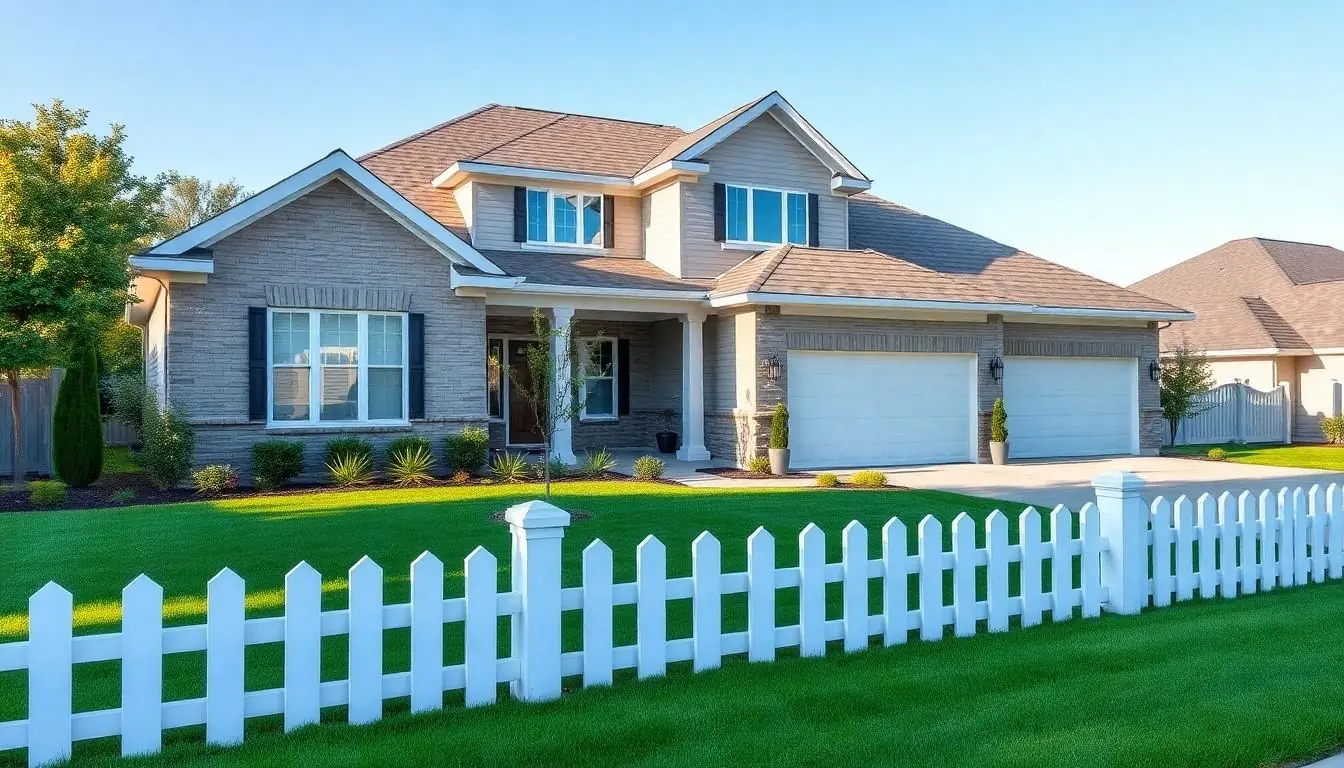Homeownership can feel like a rollercoaster ride—thrilling, sometimes terrifying, and full of unexpected twists. Just when you think you’ve got it all figured out, a leaky roof or a surprise squirrel invasion can send your stress levels soaring. That’s where homeowners insurance swoops in like a superhero, ready to save the day.
Understanding the ins and outs of coverage isn’t just smart; it’s essential. It’s like knowing the difference between a fluffy pillow and a rock when you crash after a long day. With the right policy, homeowners can sleep easy, knowing they’re protected against the unexpected. So let’s dive into the world of homeowners coverage and uncover what you really need to keep your castle safe and sound.
Table of Contents
ToggleOverview of Coverage for Homeowners
Homeowners insurance provides financial protection for various unexpected events. It typically covers dwelling protection, which safeguards the physical structure of the home. Many policies also include personal property coverage to replace belongings damaged by perils like fire or theft.
Liability protection is another vital component, covering legal claims against the homeowner for injuries or damage occurring on their property. Additional living expenses coverage may apply when a homeowner must evacuate due to a covered event. This coverage helps pay for temporary housing and related costs.
Specifics of coverage can differ among policies. Some homeowners policies offer optional endorsements for added protection. For instance, coverage for valuable items like jewelry or art can be expanded through specialized riders. Such additions may enhance overall peace of mind.
It’s crucial to evaluate policy limits and deductibles before purchasing insurance. Understanding how much coverage a homeowner requires depends on factors like home value and local risk levels. Comparing multiple quotes enables homeowners to find the best fit for their needs.
Perils typically covered include fire, windstorm, theft, and vandalism, while natural disasters like floods often require separate policies. Homeowners should consider additional protection if they reside in high-risk areas. Awareness of exclusions within policies ensures homeowners know what’s unprotected.
By thoroughly exploring these coverage types, homeowners can secure vital financial protection. Every homeowner benefits from knowing the specifics of their policy, making informed decisions on coverage options.
Types of Homeowner Coverage

Understanding different types of homeowner coverage is essential for effective risk management and financial security. Policies vary in scope, and homeowners should be aware of the key components.
Dwelling Coverage
Dwelling coverage protects the physical structure of the home. This coverage applies to the main building, including walls, roof, and attached structures like garages. In events like fires, storms, or vandalism, dwelling coverage steps in to cover repair or rebuilding costs. Depending on the policy, it may also include structures like fences and sheds. Homeowners are advised to maintain coverage limits that reflect replacement costs for extensive protection.
Personal Property Coverage
Personal property coverage addresses belongings within the home. This includes furniture, electronics, clothes, and other personal items. Protection extends to damage from fires, theft, or certain perils listed in the policy. Some policies provide options for replacement value coverage, ensuring that impacted items are replaced rather than depreciated. Homeowners should inventory valuable possessions to confirm adequate policy limits and understand any exclusions.
Liability Coverage
Liability coverage represents another critical component of homeowner insurance. This coverage safeguards against legal claims arising from injuries or property damage that occur on the homeowner’s premises. It covers attorney fees, medical expenses, and damages awarded in liability lawsuits. Limits range widely, so homeowners must assess their risk exposure and choose appropriate coverage levels. Notably, liability coverage may also extend to incidents that occur off the property.
Factors Affecting Homeowner Coverage
Understanding factors that affect homeowner coverage helps in choosing the right insurance policy. Various elements influence the cost and scope of coverage available to homeowners.
Location and Risk Assessment
Homeowners in high-risk areas face increased insurance premiums. Proximity to coastlines raises vulnerability to natural disasters like hurricanes and flooding. Urban regions may possess higher theft rates, affecting personal property coverage. Some insurers conduct risk assessments based on local crime statistics, weather patterns, and historical claims data. Communities with fire hydrants and nearby fire stations often receive discounts for reduced risks. Recognizing these factors aids homeowners in making informed decisions about their coverage options.
Home Value and Replacement Cost
The market value of a home significantly impacts insurance costs. Appraisers consider these values when determining dwelling coverage limits. Replacement cost techniques ensure homeowners can rebuild their property in today’s market, regardless of market fluctuations. Custom homes or those with unique features often require special assessments to reflect accurate replacement values. Investing in a thorough evaluation reassures homeowners they have sufficient coverage in case of damage. Adjusting coverage limits based on ongoing home improvements also maintains appropriate protection levels.
Common Exclusions in Homeowner Policies
Homeowner policies often contain specific exclusions that homeowners should recognize. Natural disasters, like earthquakes and floods, typically aren’t covered under standard policies. Policies may exclude certain types of personal property, such as expensive jewelry or collectibles, unless additional coverage is purchased.
Pest infestations and mold damage also aren’t usually covered. Homeowners might find that damage from lack of maintenance or wear and tear falls outside policy limits. Issues arising from illegal activities on the property can lead to claims being denied as well.
Understanding exclusions helps homeowners identify necessary add-ons for comprehensive protection. Policies might deny coverage for any damages resulting from war or nuclear incidents. Increases in premiums may occur if a homeowner’s community faces higher risks due to crime or environmental factors.
Additionally, liability coverage may not protect against dog bites or injuries resulting from certain types of aggressive breeds. Water damage from sewer backups or sump pump failures is often excluded without specific endorsements. Homeowners are encouraged to read their policies carefully to ensure they acknowledge these limitations and make informed decisions about their coverage needs.
By recognizing these common exclusions, homeowners can take proactive steps to enhance their protection. Each policy differs in how exclusions are listed, so reviewing specific terms is essential. Homeowners can consult their insurance agent to gain clarity on this topic and evaluate the need for additional coverage options.
Tips for Choosing the Right Coverage
Assess personal needs and risks before selecting a homeowners insurance policy. Understanding specific coverage requirements allows homeowners to tailor their policies effectively. Identify the value of the home and belongings to determine adequate dwelling and personal property coverage.
Compare multiple insurance quotes to find the best offer. Different insurers may provide varying coverage options and premiums. Reading reviews and assessing financial stability of insurance providers helps ensure reliable service.
Consider optional endorsements for additional protection. Valuable items, like jewelry or collectibles, may require specific coverage. Homeowners should evaluate their unique situations and determine if extra coverage is necessary.
Review policy limits and deductibles carefully. Choosing a policy with a manageable deductible effectively balances monthly costs and out-of-pocket expenses. Local risks, such as crime rates and weather patterns, influence these factors significantly.
Learn about common exclusions in homeowners insurance policies. Standard policies typically do not cover natural disasters like floods and earthquakes. Being aware of exclusions enables homeowners to seek additional endorsements or separate policies for comprehensive protection.
Seek advice from experienced insurance agents when selecting coverage. They can offer insights into policy details and help clarify complex terms. Engaging with professionals allows homeowners to make well-informed decisions.
Regularly reassess coverage needs as situations change. Home improvements, lifestyle changes, and additional belongings may impact insurance requirements. Staying proactive in evaluating coverage can prevent underinsurance and ensure adequate financial protection.
Homeowners insurance serves as a vital safety net for those navigating the unpredictable journey of homeownership. By understanding coverage options and policy specifics, homeowners can safeguard their investments and maintain peace of mind. It’s crucial to regularly assess personal needs and risks while comparing different insurance quotes to find the best fit.
Being aware of common exclusions and considering optional endorsements can further enhance protection. As life changes and home improvements occur, staying informed about coverage limits ensures homeowners remain adequately protected against unforeseen events. With the right approach to homeowners insurance, individuals can enjoy their homes with confidence and security.


